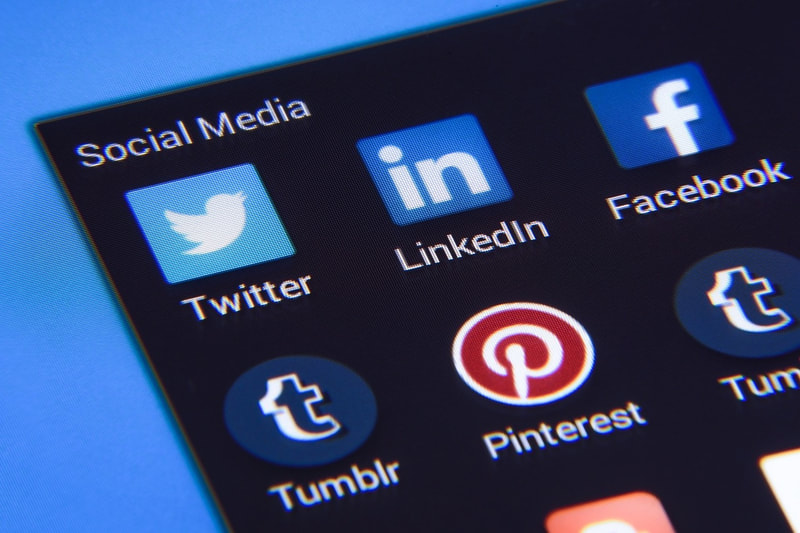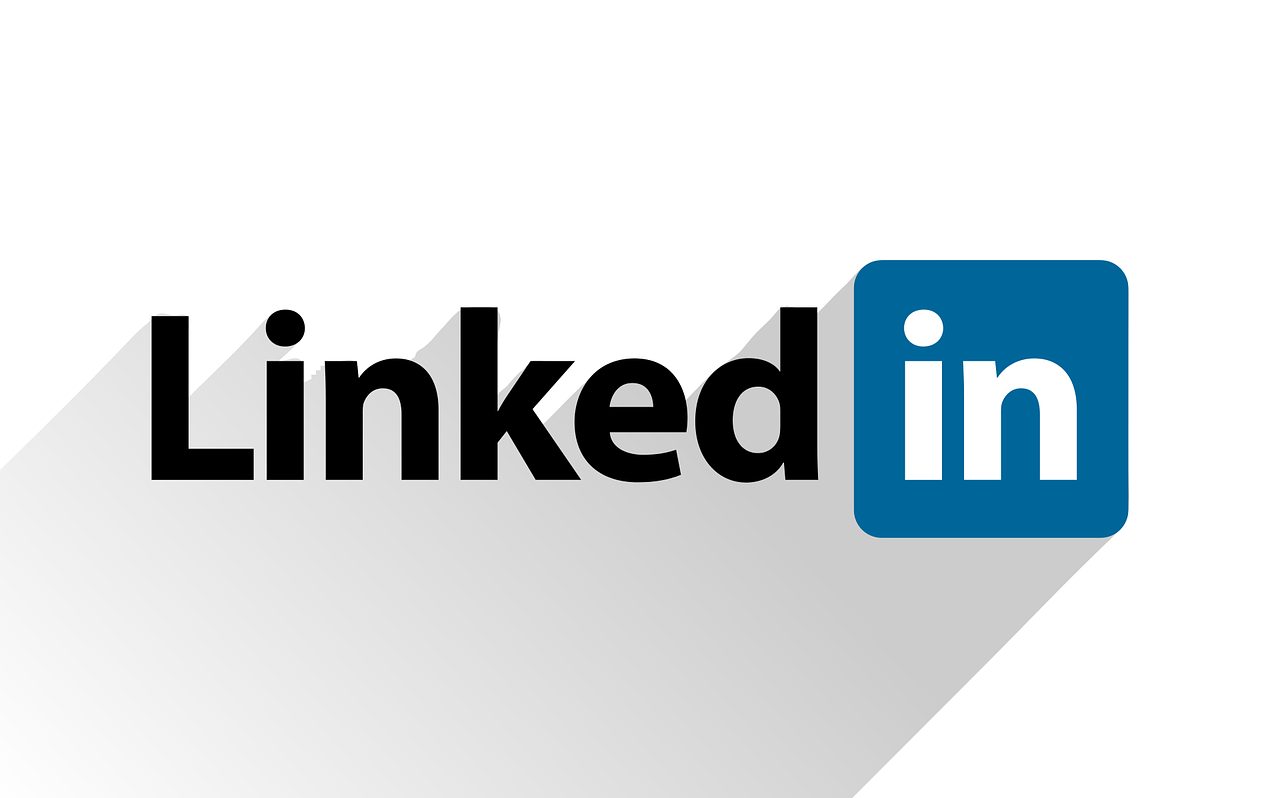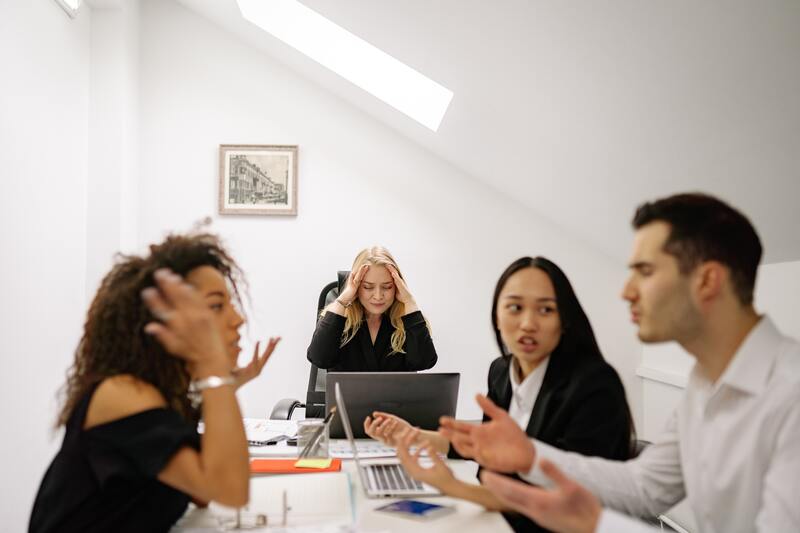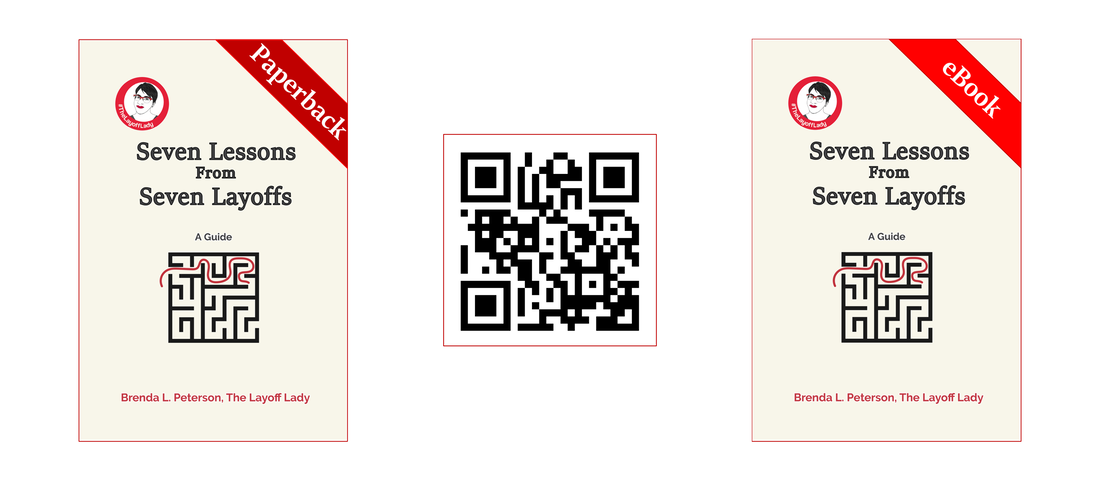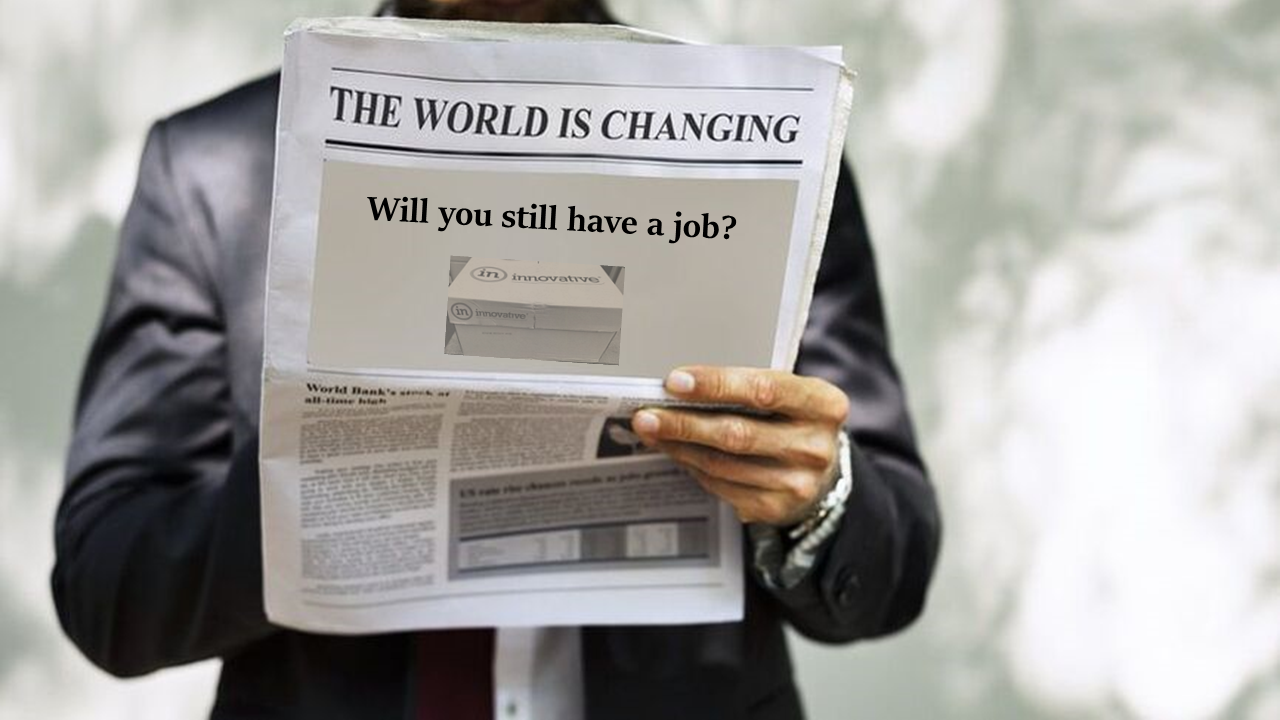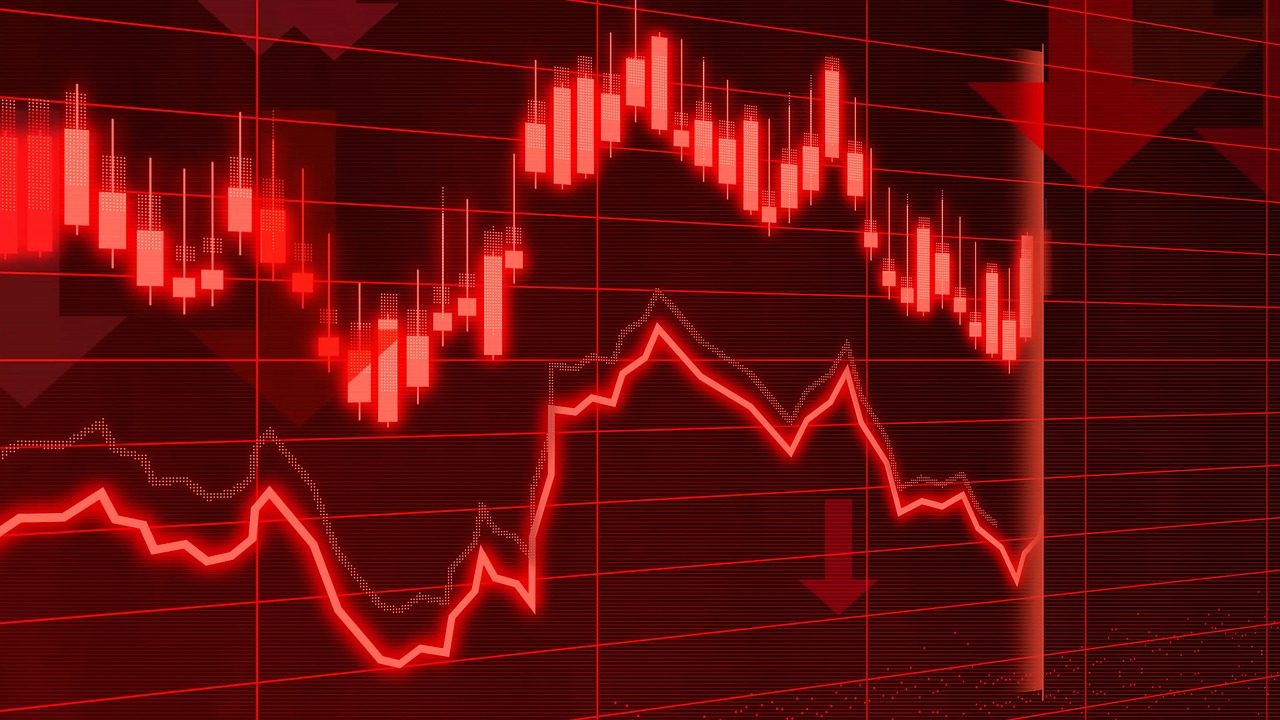|
by Brenda L. Peterson, The Layoff Lady Network Building in the BeforetimesPre-pandemic, "networking" typically meant attending in-person events, shaking a few hands, and having a somewhat meaningful conversation with another human. While in-person opportunities are again plentiful, webinars continue to be popular since they are a flexible way to bring people together to learn. Be sure to think of your network during virtual events, too. Connect with Webinar AttendeesLike many people, I have attended (and delivered) approximately a bijillion online meetings, trainings, and interactive instructor-led sessions. I've been approaching these sessions with a mind towards not just attending, but also making new connections. Although the process differs from in-person interaction with people, I have managed to connect with more people (and often form more meaningful connections) than attending in-person meetings and “working the room.” As someone who runs introverted and communicates effectively in writing, this was an opportunity to turn webinars into a bonus network-building exercise. Your Personal Webinar BrandingWhen attending a webinar, I make sure that people are able to see who I am, my full name, and a picture, if at all possible. I use the same photo I use on LinkedIn so that people associate me with that picture. I also make sure that my first and last name are present so people have a chance of being able to find me after the session--or will recognize my name. In addition, during the webinar, I interact during the session. This usually involves commenting in the chat when prompted--which is also an opportunity for other attendees to see my full name. During any small group interactions, I'm sure to turn my camera on so people can see my face, hear my voice, and see my name. If the presenter asks people to share out loud, I usually turn on my camera, and share my thoughts. Again, this is another opportunity for people to hear my voice, see my face, and see my name. Each of these "impressions" helps people start to get to know me at least a little bit. Finding Potential ConnectionsDuring a webinar, I often take a screenshot of the participant list and a gallery of attendees if people are on camera. Whenever possible, download the chat from the session. This helps me identify who was active in the webinar and gives me additional information on anything they might have shared during the session. I often make notes on notecards during sessions to help me remember who might have said what and key content covered. All of these details can help me when interacting with attendees later on when I send LinkedIn connection requests. Researching Potential ConnectionsAfter attending a webinar, here is my process for adding new LinkedIn connections:
One Option: Personalizing a Connection RequestPersonalizing connection requests is a great way to start building a relationship with a new professional contact. Here are the key components I include:
Personalized Connection Request ExamplesHere are a few examples of messages that you can use to invite people to connect. Currently, LinkedIn allows you to include up to 300 characters when personalizing connection requests. Hi, Jen. I see we both attended today’s White Box Club meeting. I’m also in career transition and seeking a new role in learning and development. Let's connect! I'm also always up for a 30-minute "virtual coffee" meeting to discuss how we can help one another as we job search. --Brenda Hi, Jack. Great to interact with you a bit at this morning's Excellence Share. I love sharing ideas with fellow L&D professionals. Let's connect! --Brenda Hi, Javier. I see we both attended today's "Sales Enablement Best Practices" webinar. I definitely enjoy learning from this group. Since you mentioned that you are job searching, be sure to check out The White Box Club on Meetup to help you as you find your next role. Let's connect! --Brenda Other Options: Showing Your Value as a ConnectionNow that LinkedIn limits the number of personalized connection requests those with the basic membership receive each month, sending personalized connection requests might not be an option for you. In those cases, here are a few other options for helping to show your value to a potential connection:
After The Initial ConnectionHow do you further nurture that relationship? Here are a few ideas.
Continue to Build The RelationshipAfter connecting with people initially, be sure to continue to nurture those connections. Posting useful content, and occasionally messaging people is one way to do that. Ideally, you can add value to the relationship before you are in a position where you need to ask those individuals for help. Learn More
0 Comments
by Brenda L. Peterson, The Layoff Lady Welcome To The SuckWhether you are in career transition and looking for a new job, or employed and looking for something new, job searching is always challenging--partly due to all of the uncertainty you'll face as you "wait for your life to start again" as you search for the next right role fro you. Suffice it to say that job searching can be full of obstacles that make the process hard to manage. Knowing the possible issues is the first step towards figuring out how to mitigate each challenge and move forward. Here are five unfortunate reasons I have discovered while working through job transitions and a few coping strategies for dealing with each. Reason 1: You Won't Always Interview For "The Perfect Job."Congratulations! You just found THE PERFECT JOB! You have all of the required and preferred qualifications! It's at the right level with your dream company, and you even know someone who works there who will say great things about you! Surely your days of job searching are coming to a close because you are the purple squirrel for THE PERFECT JOB! Enter reality. I'm sorry to say that you may not even manage to get so much as an initial phone screen for this position. Even when you feel like the job was tailor-made for you, it may not work out the way you want. Why might that happen? For one, the position may not actually be available. Some organizations post job openings to gauge interest in the position even though they have no solid plans to hire anytime soon. Conversely, the role may have been open for a while, and the selection process may be well underway. There could also be an internal person who will take the job without additional people being considered. In some cases, companies may have a policy that they need to post positions externally for a given length of time, even though they already have a candidate in mind. Still other organizations may decide part way through the hiring process to leave a position unfilled but not remove it from their posted jobs right away. Assuming the job is really, and for true accepting applicants, there may still be issues. For one, key organizational stakeholders may lack common agreement on what a job role will do and what constitutes being a well-qualified candidate. Decision makers may also each have their own non-negotiable requirements for the qualifications for the potential hire--which may or may not relate to the person's ability to do the job. Remember that no matter what the issue is, it seldom has anything to do with you personally. It's just the life of recruiting for and trying to fill positions with the best candidates they can find--sometimes with people who are (unfortunately) not you. Coping Strategies
Reason 2: People Who Aren't Great At Their Jobs Will Make It Hard.Remember a time at your last job when you had to deal with someone who was not great at what they did for a living? Like the rude salesperson who didn't do their paperwork correctly and caused you to lose out on a great deal? Or the manager who approved your time off request months ago, then decided to "unapprove" it a week before your vacation? During your job search, you'll realize those people exist in other organizations, too, and they sometimes stand between you and the job you want. It could come in the form of an administrative assistant who is supposed to coordinate your travel for an in-person interview--who didn't make reservations and then went on vacation, leaving you scrambling to find someone else to help. It might be the person conducting initial phone interviews who didn't realize that learning experience design and instructional design were the same thing and screened you out. It may even be an insecure possible future coworker who wants to avoid hiring someone who might outshine them. Like the rest of life, things are not always "fair." You may not get the job, even if you are a strong candidate. And so it goes. Coping Strategies
Reason 3: Along The Way, Someone Will Dislike You.I don't know about you, but I am friggin' delightful. I'm also able to connect and get along well with most people. However, during the interview process, no matter who I am or am not, it will not match what someone else thinks the candidate for the position should be. Whether they thought I should have smiled more, made a different outfit choice, or given more detailed examples, someone's negative reaction to who I am may take me out of the running for a job. People often have their own pet theories about what they'd like in a coworker, manager, or direct report. They may be convinced that having the title "account manager" is pivotal for success, that all candidates must have a master's degree, or that people who ride horses are pretentious. You might also have the misfortune of reminding them of the mean girl in high school and BOOM--instant dislike. Again, life isn't necessarily "fair." Coping Strategies
Reason 4. The Process May Be All Over The Place.The job interview process can be anything from one interview to many, many, many interviews, depending on the organization and the role. Typically, I expect to have a phone screen with an entry-level HR person to confirm that I can speak in sentences, an in-person interview with the manager and potential coworkers, and a final interview to demonstrate skills and/or meet with a company VP. In addition, a given employer may want you to do more to show that you have the skills necessary to do the job. For example, you might be asked to pass written assessments, submit work samples, present to a group or complete a project. They may even have you come into the office for the day and "work" as if you are already in the position you are applying for. Interviews could take place over the phone, via web conference, through email, in person, or (more likely) a combination of all of the above. Some companies will have a pre-defined, structured process for the pacing and format of interviews. Other organizations will appear to be making it up as they go along. You may also inadvertently skip steps and realize near the end of the process that you should have talked about a basic topic like salary range or work location. Sometimes, it may seem that the interview process is never-ending because you have yet to talk with every single person in the organization. Coping Strategies
Reason 5: Their "Fast" And Yours May Be Different.I remember being a child and how LONG the year seemed. It always took forever to get from my birthday at the end of August to Christmas. Enter adulthood. I find myself consistently marveling that it's already whatever day/month/season it is because it seems it was just that other day/month/season. In this scenario, your employer is the adult, and you are the child. Some companies will be motivated to fill positions and move quickly. In contrast, others might have days, weeks, or even months between your contact with them--all because something that wasn't filling that position became a priority. What about that two days the employer estimated it would take them to contact you? It may turn into a week or two. Since they're busy addressing customer issues, traveling to client sites, and doing their expense reports, they didn't even realize it took that long. Or, as any job seeker doesn't want to hear, you may not be getting the job. Responding to a candidate quickly usually shows that the potential employer is interested. In many cases, taking longer to respond may indicate lagging interest. Such is how the whole process works. Coping Strategies
Learn MoreBy Brenda L. Peterson, The Layoff Lady The Value of Professional NetworkingWhen it comes to job searching, professional networking is a critical component of success. Ideally, you make initial connections with people through LinkedIn (maybe even after meeting them in person or at an online group event). While this is a great start, there is value in building relationships beyond that initial connection. A 1:1 meeting can significantly strengthen a networking relationship and help you learn how you and your new connection can help one another succeed. About 1:1 Networking MeetingsSo what exactly is a networking meeting? Back in the day, I remember hearing people talk about doing "informational interviews." In short, if you were interested in having a particular job or working with a specific company, you would contact an organization or individual and ask if they would meet you for an informational interview. In this 1:1 meeting, which could take place via phone or in person, you might learn about the company, what they are looking for, skills to acquire, and more. It also allowed you to start to build a relationship with a company--or a possible advocate in the person doling out said information. Fast forward to now. Today, a networking meeting is typically between you and another person deciding to spend a half hour-ish together. This meeting, sometimes called a coffee chat, could happen virtually via Zoom or in person, often over coffee. If you're job searching, the typical focus will be on how to progress in your job search. Someone may agree to a networking meeting because you have things in common (like a field of work, background, professional goals), because they are generally committed to helping people when they are job searching, or because you have a mutual acquaintance to ask that person to meet with you to help you out. Networking Meeting = Informal InterviewWhenever you have an opportunity to meet one-on-one with someone, remember that you are taking part in a type of informal interview. Whenever I meet with someone in career transition, my goal is to help them figure out their next steps, offer advice (if they ask and are interested), and give them ideas on further steps they might take, including who they should speak with next While I go in with this idea, the amount of help I'll provide also depends on how this networking meeting goes. Ideally, we have a good, productive conversation, and I think to myself, "I totally want to help this person more." If the meeting goes well, I'll refer them to specific resources that might benefit them (like a networking group they might want to join, a company to check out, someone to follow on LinkedIn) and even put in a good word for them to have a networking meeting with someone else who might get them closer to their goals. In addition, if it goes REALLY well, this is a person who I'll refer to others for openings, pass on job opportunities, and maybe even hire someday. If the meeting doesn't go well, I'll share a few resources, but I may not be willing to help them as actively moving forward. Remember, any interaction you have with people will impact their desire to help you in the future. Types of Networking MeetingsHere are a few common types of networking meetings:
Networking Meeting Best PracticesHere are a few best practices for networking meetings:
The True Power of Networking MeetingsWhen people talk about how they "networked" into a new job, typically, that means they leveraged their initial connections to help make inroads with new contacts, who helped them get closer to a new position. The holy grail of networking meetings is when the person you meet with agrees to introduce you to someone else they know who could help you. That process repeats until you're talking to a hiring manager or influencer who can help you get an interview for a job. Having good networking meetings is a critical step in that process. Learn MoreBy Brenda L. Peterson, The Layoff Lady Employer-Focused Career PlanningWhen you think about your career, you may think in terms of your current job title, what the company needs from you, and how your job might change based on organizational needs. This employer-focused mindset prioritizes the success of the business above all else. Often, the career planning offered by your employer is a part of their overall succession planning and focused on making sure their workforce has the skills to address anticipated future company needs. It's important to remember that the needs of a given business will change over time, as will company leaders, the market, the economy, and more. If that employer's needs no longer align with the skills you have and the salary they pay you for those skills, the company may make the business decision to "go in another direction." The end result may be them finding someone else to do the work they need done regardless of the skill set they encouraged you to develop. Your New Mindset: Realistic OptimistIn much of life, having the right mindset makes all the difference. I choose to be a Realistic Optimist. That means I acknowledge the challenges inherent in situations and also realize that I have the power to make choices that will help me achieve a positive result--in this case, a career that is meaningful and fulfilling for me. Let's look at a few of the realities of work and your career:
Let's also look at what that means for you:
Given these realities, thinking of your work future only in terms of who is currently signing your paychecks is not the wisest course of action. Instead, it's time to shift how you think about your work life. You can not afford to prioritize an employer's needs over what you want and need from your career. It's time to give yourself a promotion! Congratulations! You are The CEO of YouLeveraging your Realistic Optimist mindset, you are now no longer just an employee doing what your current employer wants and needs you to do. Now, it’s time for you to think of yourself first and foremost as the Chief Executive Officer of your own company and the business of you. This makes you the CEO of You. As the CEO of You, you are looking for employment that is a good business arrangement for you. Just like the executive team at a company needs to make tough decisions for the organization’s greater good, you need to make decisions that are in the best interests of you and your household. Adopting this mindset will change your life. The Business of YouAs the CEO of You, it’s time to think about what success looks like for your business. What are your assets? What are your marketable skills? Which company or companies should be your business partners? When is it time for you to end a business relationship that is not working? When is it time for you to pursue a new opportunity better aligned with your life? Whereas you as an employee may feel like you do not have any options, you can't afford to think about your livelihood just in terms of what your biggest client (your current employer) needs. Instead, you need to make decisions for the good of your business as the CEO of You. One of those is determining how to protect one of your greatest assets–your ability to earn a living by leveraging your knowledge, skills, and expertise. You also want to stay mindful of all the aspects of the employment decisions you make and how they impact your overall wellbeing--including your career, physical, financial, social, and community wellbeing. Your Short and Long-Term GoalsAs the CEO of You, think about your long-term goals. Just like the company's CEO does not make decisions based on what other companies think they should do, you need to do the same. Regardless of other people’s opinions, make the right decision for you and your household. Align your next steps with your overall goals. Think in terms of preferences and priorities. Remember, too, that you’re not just the CEO of your career but the CEO of all aspects of you. If you're in career transition and searching for a new role, this means not taking “any old job” unless you decide that is the right move for you. If you're employed by an organization that wants you to learn a new skill set, you get to decide if that interests you and how you will invest your time, talents, and money to build those skills. You get to decide what is a valuable opportunity for you and decide your next steps as you work toward aligning what your employer needs and what you want to do. This also means that your business decisions may change over time as the environment changes. You can also change your mind about the right job for you if your current role has enough value for you to stay, when it is time for you to do something else, how you want to change direction, and more. Adjusting Your Business StrategyAt the end of the day, remember your role as the CEO of you and make a decision that aligns with your overall career and life goals. If that means quitting a job that makes you miserable regardless of the short-term financial consequences, you can do that. If you want to leave a job that your friends say should be your dream job, you get to make the right decision for you. If you decide to take your career in a whole new direction that others might think is too risky, you get to weigh your options and go in the direction of your choice. As the CEO of You, you are the driver of your career and your life. Act accordingly. Learn MoreBy Brenda L. Peterson, The Layoff Lady About Personal BrandingWhether you're actively job searching or just trying to build your professional network, sharing content on social media is a great way to demonstrate your value. By identifying topics that people with your professional focus care about and sharing related content, you will help people associate your name with those areas of expertise. While regularly sharing content is valuable, it can also be time-consuming. Here are three tools I regularly use to organize and streamline this process. Google AlertsOn LinkedIn, you will share some content that you directly create. This might include a post about an event you attended, your career news, or your observations on a given topic. When it comes to LinkedIn, most of my content includes articles on critical topics of interest, with some introductory commentary framing the value I see in the article. This means I need to locate and collect those articles to post them as needed. One way I locate helpful content on each topic is to set up a Google Alert for keywords or phrases relevant to my professional skill set. Each Google Alert sends you an email with new online content regularly. Here are a few examples of what Google Alerts you may want to set up:
After you identify the keywords for topics that people in your industry talk about, create alerts to keep a steady stream of content coming to you. Flipboard serves two essential purposes. First, you can follow exciting topics and see content other users share. Second, you can use Flipboard to create magazines on a given subject area and bookmark content that interests you for later use. Here are a few ways you might find content to save in a Flipboard magazine:
Gathering possible information to post when you run across it, organizing it, and making it easy to access will save you a lot of time figuring out what to post. BufferWhile the other two tools are about finding and organizing possible content to post, now let's look at a tool to schedule those posts. There are several tools available to help you manage social media posts. Currently, I use Buffer. This online platform has a free version that will enable you to manage posting on up to three social media platforms. When my goal is building my professional network and job searching, I focus on LinkedIn. Buffer enables you to create, schedule, and update posts as needed. When searching for a new role, I may post as often as daily. When focusing on building or maintaining my network, I may post once or twice a week. The Learn More section includes recommendations on how often and at what times you may want to share content for the greatest impact. Creating A Post When I create a post to share an article, I often include the following details:
Here are a few examples:
Learn MoreBy Brenda L. Peterson, The Layoff Lady Preparing for a Positive ScenarioContingency planning is not the most upbeat topic. It's all about making a backup plan just in case something terrible happens. Instead of predicting doom and gloom, let's update our planning approach and focus on opportunity readiness. Opportunity readiness is about thinking about who you truly are, what you want your work life to be, and living into that future. When you step into that role of being the CEO of you, your focus shifts to what you want to be and positioning yourself for that success. If you've done that, you'll be able to identify what an amazing opportunity is for you--and be ready to go for it! An Opportunity Presents ItselfEven when you like your current company, position, or coworkers, sometimes you might hear about an opportunity that could be the right next step for you in your career. Here's what that might look like:
In each of these cases, you weren't actively looking for a new role. However, once you heard about the opening, you realized it might be just the thing you were looking for and found out more! Opportunity ReadinessOpportunity readiness is a part of career resilience that may not always occur to us. When people are not actively job searching, sometimes they neglect to make new networking connections, keep in touch with people they know, update their LinkedIn, or update their resume. However, these are EXACTLY the things to prioritize. Knowing what you want, staying in touch with your network, and always evolving your skills will position you to move quickly when the time comes. Your ResumeYour resume is the main document potential employers want to see. Even if someone contacts you about an opening, you’ll need an up-to-date resume to be considered. This document needs to summarize who you are as a candidate as well as your most relevant skills, work history, education, professional affiliations, and accomplishments. This is where you can shine! Keeping your resume current is a crucial first step. Including details on your current role, adding newly earned credentials, and highlighting recently used skills can help you shine. Getting a resume out the door within a couple of hours can improve your chances of being seriously considered. It's also a great way to help the person who connected you with the opportunity feel even more sure that you're a great fit! Your LinkedIn ProfileLinkedIn is your professional billboard to the working world. It is an all-purpose marketing tool where people can view information beyond your resume, see which other people and companies you may have in common, and read the content you share in your posts. When people are gainfully employed, they often stop fine-tuning their profiles and interacting with their professional connections. Taking time to polish your LinkedIn profile and posting content on your areas of expertise is a way to remind people of you and your professional value. In fact, continuing to be active on LinkedIn may very well be why someone contacts you about what might be the perfect opportunity for you. A great way to remind people of who you are and what you're good at is by posting relevant content. Sharing a picture of you leading a training session, or an article about a great new way to optimize a project will help people associate you even further with your skillset. Your Work SamplesYour work samples, often called your portfolio, are a way to demonstrate the skills you mention in your resume or LinkedIn profile. These work samples should give the hiring team an idea of your process and finished product examples. Creating a portfolio is not something that most people can quickly throw together. There are several steps, including identifying your overall portfolio goals, developing or selecting work samples, positioning each work sample to showcase your professional capabilities, and determining the technological aspects of how you might set up your portfolio. Since some employers may require a portfolio before seriously considering you for a role, pulling this together and updating it as needed can help make you success-ready. As you complete interesting projects,remember to add those to your portfolio It' s nice to have your portfolio grow and change as you evolve your skills. What Do You Think?What do you think would prepare you to move quickly on an opportunity if one presented itself? Include your thoughts in the comments. Learn More
By Brenda L. Peterson, The Layoff Lady The Challenge: Describing What You DoWhether you're searching for a new role or thinking about your professional development, not having the right words to describe your skillset can hinder your progress. Identifying your career keywords will help you create effective messaging for your LinkedIn profile, resume, conversations with colleagues, and other written communications like email and social media posts. Where To Start: LinkedIn and KeywordsHere is my recommendation for how to begin gathering keywords that align with your chosen profession:
Let me take you through an example. Search for Your Target Job TitleI searched LinkedIn's Jobs section for Business Partner Organizational Development in the United States. From the results, I selected ten currently open positions to review further (because I'm an overachiever like that). Here are those job titles:
Lesson Learned: When you search for a job title, your results will include a variety of titles different companies use. Be sure to review the job description to learn more about what that company expects from that role. The duties for the same job title might vary widely from company to company, as might the terminology they use to describe it. Identifying Skills and KeywordsTotal Number of Different Skills Returned for All Ten Jobs For the 10 jobs I reviewed, 69 different skills were included in the results. For context, if all roles had the exact same skills, this number would be 10. If all of the roles had different skills, this number would be 100. Lesson Learned: Not only will job titles vary across organizations, but what skills they value can also differ. Be sure to review the job description to learn more about what skills the company thinks will help make someone in that role successful. Specific Skills Returned For More Than One Job Several skills came up more than once across those ten jobs. Here is the number of times a specific skill appeared for more than one role:
Lesson Learned: Even if there is not widespread agreement on the terminology used across organizations, some keywords will show up more often. Consider including popular keywords in your skills section on your LinkedIn profile and in your resume. Different Keywords for Similar Skills While specific keywords like "communication" and "problem solving" appeared more than once within the 10 job descriptions, several related terms might be included instead. Here are a few groups of terms that take different approaches to describing similar concepts:
Lesson Learned: When you look at the groupings of keywords, you can see the broader areas where roles like this would operate. Each company may use slightly different terminology regarding the skills that they value. When you talk about the work you do, consider weaving some of these words into your stories. What Do You Think?How do you identify the right keywords to use to describe what you do? Share your thoughts in the comments. Learn More
By Brenda L. Peterson, The Layoff Lady The Value of a Backup PlanCareer Resilience is all about being ready to deal with what comes. Thinking through scenarios, or contingency planning, is one way to prepare for possible outcomes. By thinking through your next steps before you are in that situation, you can ensure that you are better prepared. When Work Is GreatWhen you’re in a good place at work, it’s hard to believe things would ever be any other way. Your boss supports your professional growth, your work fulfills you, your coworkers are amazing, and you can’t imagine a time when it could be any other way. Conversely, there are times at work when you’re less than thrilled about your situation. Scenario: It's Time To Move OnHere are a few indications that might prompt you to start to think it’s time for you to leave your current role:
Budget ImplicationsOnce you decide that you need to leave your current job, it’s important to take a look at your financial state. Your ability to pay your bills without the income you receive from that job will be a major factor in your next steps and timeline for leaving your role. If you have other streams of income, household members who can cover bills with their income, or savings that you are willing and able to spend on your core living expenses, you may consider leaving your job right away without a new one lined up. Be sure to think through the insurance implications of making a job change, too since your healthcare coverage might end with your job. You will need to determine how you will pay for any health-related costs. This could include switching to a family member's plan, finding and paying for other health care coverage, or determining how to handle possible healthcare costs outside of an insurance plan. Each of these options has a different price tag and level of risk. Act Now and Figure It Out LaterKnow, too, that if your current position is bad enough, you may decide that leaving right away is worth the financial hit you’ll take. Be sure to pause and think through the implications of potentially not having a main income stream and how you will cover your basic living expenses in that interim. Maybe you'll get a roommate, sleep on a friend's couch, or just deal with issues as they come. Regardless of what may make sense to others, you get to make the decision that is right for you. Launching a Job Search While WorkingMany people will choose to stay at their current job until they are able to find another one. This way, you’ll still have a paycheck coming in while you also search for a position that is a better fit. From a purely financial standpoint, this is often the best choice. Looking for a job while you’re already employed is a different challenge. You’ll need to get your job search toolkit together so that you’re ready to apply for opportunities as they arise. You’ll also need to juggle doing your current job while also actively searching for another role. Since finding a new job takes as long as it takes, you may have to live in this state of uncertainty for a while until something new works out. Maintaining Job Search MomentumWhen you’re working and also looking for a new position, maintaining your job search momentum can be a challenge. As you face job search rejection, you may be discouraged and not put in as much time looking for a new role. You may apply for roles only sporadically and not make much progress. You may also find that you’ll have good days and weeks at that job you’ve decided to leave. You may also have times when things are going well enough at your job that you temporarily slow down your job search activity. Then, you may have a rough week at work and renew your commitment to finding something new. Possible Contingency Planning StepsBefore you are in a position where you realize you need to leave your job, it’s valuable to do some preliminary thinking about how you might manage each of these factors. Consider doing the following to help inform your contingency planning: Your Income
Your Expenses
Your Savings
What Do You Think?What questions do you think you need to focus on as you do your contingency planning? Share your thoughts in the comments. Learn More
By Brenda L. Peterson, The Layoff Lady About The Seven Layoff LessonsThrough my seven layoffs and many conversations with others in post-layoff career transition, I have learned seven core lessons:
About Layoff Lesson Seven: Assess, Adapt, and Rise AboveWhen you’re searching for a new job, there are always challenges. Like with any system you put in place to solve a problem, it’s helpful to compare the actions you’ve been taking to your results. It's valuable to review where you are getting stuck during the hiring process and updating what you're doing so you can see more success. Let's look at some of the challenges you might face. Interview Progression IssuesAfter you apply for a job, your goal is to be selected for an interview. That process usually includes an initial phone screen, one or more face-to-face interviews, and then a job offer. Let’s look at possible places you might get stuck and how to evolve your approach.
Additional Job Search ChallengesEven when you have good results with your overall job search and hear back from companies on specific roles, you’ll still face challenges. Let’s look at a few:
You are the CEO of YouAt the end of the day, remember your role as the CEO of You and make a decision that aligns with your overall career and life goals. That might mean adjusting your requirements as your search goes on or holding out for what you really want. You get to decide what matters most to you and change your mind as needed. For The Whole StoryFor all the information on each of the seven lessons pick up a copy of my book Seven Lessons From Seven Layoffs: A Guide. Learn MoreBy Brenda L. Peterson, The Layoff Lady Change Is The Only ConstantBusinesses are always changing. They constantly update their strategy to stay viable long-term. Changing staffing levels is one way they evolve to meet those needs. There are a few factors to be aware of that could indicate that changes to your company, and even your role in particular, might be coming. It's also important to note that the presence of one or more of these changes does not mean that all is lost. Use these indicators as one piece of data as you think about the possible future of your job with your current employer. On the positive side, changes may be good--like an opportunity for a promotion or taking on different responsibilities. Alternatively, it could mean that some jobs may be eliminated or changed significantly, which could result in positions being eliminated, layoffs, or even a company-wide reduction in force (RIF). Here are a few signs to look for that may indicate that bigger changes might be coming to your organization. Economic DownturnFrom the dot.com bubble to the 9/11 attacks to the subprime mortgage crisis to pandemic fallout and beyond, economic conditions impact the viability of individual businesses. During the pandemic, we saw some businesses boom (like video conferencing) while others struggled (like hospitality). Consequently, for organizations that were floundering, job eliminations followed. In 2022, mortgage rates rose, causing mortgage companies to streamline their operations. Now, as businesses shift gears post-pandemic, additional workforce changes may be on the horizon. This strategy may help companies realign their staffing levels to meet business needs in a cost-effective way to respond to new economic realities. Financial TroublesNot all companies are successful--even in a strong economy. Companies might miss their sales targets for a quarter (or longer) or start to lose market share to a competitor. It could be a result of a news story breaking that causes consumers to go elsewhere. Whatever the cause of financial troubles, companies need to adapt to survive. To adjust, they may start with small cost-cutting measures, like having fewer snacks in the breakroom or downsizing employee events. On a larger level, there may be hiring freezes, open positions going on indefinite hold, no raises, or skipping performance bonuses. There could even be temporary pay cuts or elimination of some benefits (like employer contributions to a retirement plan). Since salaries are one of the biggest line items companies have, eliminating staff is one way to address financial troubles that show a significant, more immediate impact on the bottom line. New LeadershipWhether a CEO or a frontline manager, leadership changes can impact an employee’s future. When a president is replaced, a VP of a critical department moves on, or a manager leaves due to personal reasons, new people fill those positions. When key staffing changes happen, it is unwise to assume your role and responsibilities are not up for discussion. New leaders typically review the current state, assess staffing levels, revisit company goals, and make changes. This may include them bringing in their own people, restructuring departments, halting unsuccessful projects, or starting new initiatives. In some cases, they may bring in one or more consultants to make recommendations—including the jobs that will continue, their scope, and who will do them. In addition, sometimes if sweeping changes are on the horizon, company leaders start to leave for new opportunities. At one point, I worked for a very large organization with approximately seven layers of management above my individual contributor position. Before I was laid off, six of the seven people working in those positions left. Sometimes leaders leaving is not the cause of the changes, but an indicator that organization-wide changes are taking shape. Ownership ChangeCompanies are always adapting to stay viable. Sometimes, that means a change in company ownership. Possibilities include mergers, being acquired by another organization, acquiring another business, spinning off from a larger company into a separate entity, or changing how the organization is funded (like moving from venture capital to private equity). When ownership changes, so does the organization. In the event of a merger, duplicate teams will combine, and some positions may be consolidated or eliminated. A company culture with very structured documented processes may be replaced by a move-fast-and-break-things startup mindset. New company values or objectives may mean that a department once considered indispensable might now be seen as costly overhead. When a new company takes a closer look at finances, they may be ready to take more immediate action on teams that seem like they are a cash drain. Regardless of the circumstances, one thing is sure. The organizations in question will determine changes that need to be made and move forward to strengthen the company—which may or may not include a job for you. RestructuringOccasionally, companies revisit their goals and decide to switch directions. For example, a call center might start expecting all agents to be able to answer all call types, then shift to having specialized teams, and then decide later to outsource or eliminate a service altogether. The work that may have been completed by two teams may now be the responsibility of one brand-new department. This may also bring in new leaders with new ideas on how to organize work optimally. Shifts take place to minimize costs or capitalize on a potentially lucrative market. Unfortunately, this also means that the job you have that was once considered essential may be deemed out of scope. Reduced ResponsibilitiesOn an individual level, changes to your job (especially if it becomes less challenging) may be a hint about the future of your role. If, at one point, you led projects, and now you are left out of crucial meetings, take notice. See if this is an isolated incident or a pattern. This may also be a downstream effect from changes elsewhere in the organization. For example, a new manager may observe you doing your (now less challenging) job and see a misalignment between the value you bring and the salary you receive. Whether this is due to a new boss who isn’t your biggest fan or one who has a former colleague they want to bring in to replace you, it’s important to pay attention. Changes in responsibilities may put you in jeopardy as the organization evolves. Company CultureDepending on company culture, the amount of voluntary and involuntary turnover varies. While some companies have employees who have been there well over a decade, others may have the bulk of their staff there for less than a year. A larger, more established company has a better chance of longevity, while a tech startup may have more people regularly coming and going. Some companies may quickly decide if an employee is an organizational fit and take action to move them out of the company more quickly. Others will have a structured (and often lengthy) procedure for attempting to correct performance before terminating. An organization’s mission, values, and day-to-day practices will influence your onboarding to a company and when and how quickly you might be offboarded if it's not working out. A Round of LayoffsThe most blatant indicator that you may lose your job is that the company has already done some layoffs. I used to think that if I was still employed after a layoff, my role was safe. Unfortunately, that is not always the case. At one of my jobs, the organization did several rounds of "quiet layoffs." The company never formally acknowledged job eliminations. Instead, I would notice that someone would be listed as "offline" in our office chat application, then later see a LinkedIn post from them saying they were looking for new opportunities. In that role, I had this experience of someone being gone about once a month for a few months. When the company released a new organizational chart, and I was on it, I thought I was safe--especially since at least a couple of people had been eliminated a couple of weeks prior. Shortly after, my position ended as well. All of The AboveSometimes, a layoff is inevitably caused by a series of events. For example, it may start as an economic downturn, followed by the company’s financial issues, then a leadership change, a resulting reorganization, and end with the company being sold. There could be layoffs at any point in this process, and it could also happen more than once. Learn More |
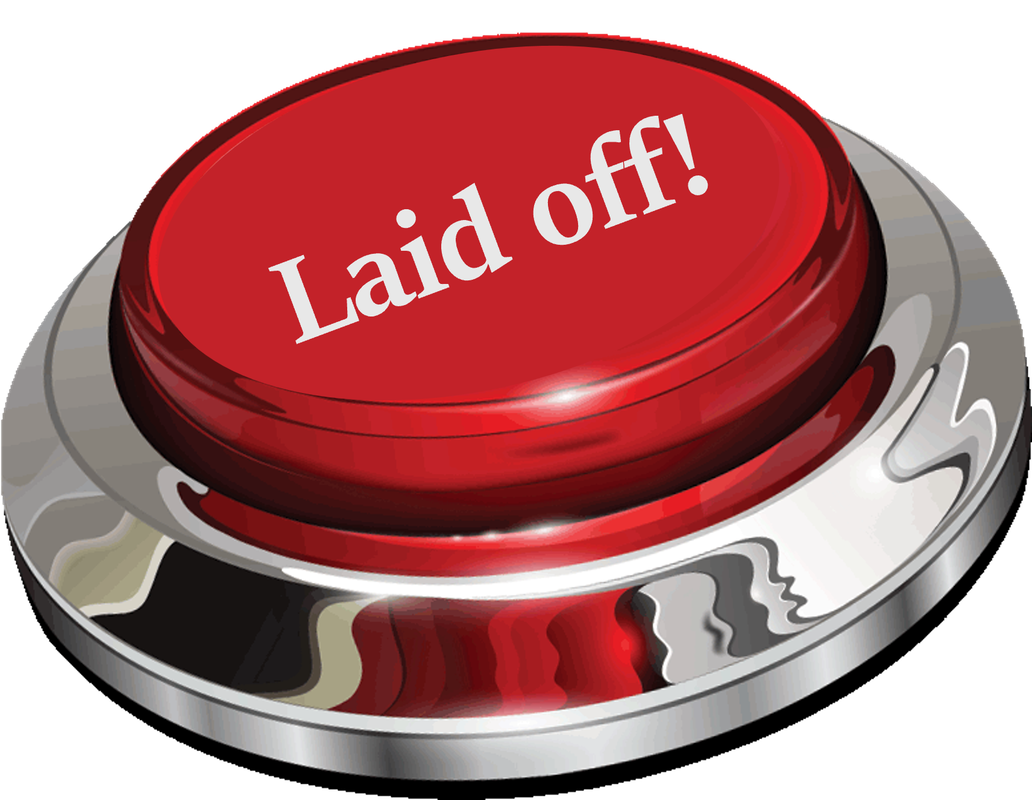
Just get laid off?
Click here for info on what to do first. Author7-time layoff survivor Brenda L. Peterson, The Layoff Lady, waxes poetic on layoffs, job transitions, & career resilience. Buy The Book!Were you recently laid off from your job and need a roadmap for what's next? Pick up a copy of my book, Seven Lessons From Seven Layoffs: A Guide!
Categories
All
Archives
July 2024
|










